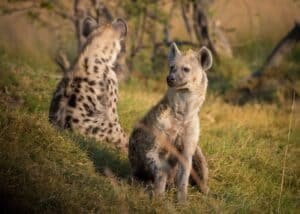Have you ever wondered that where do wildcats live? We’ve all heard of lions, tigers, and jaguars, but their fame frequently overshadows the vast spectrum of lesser Felines that shear the planet. Cats, both domestic and wild, are members of the Felidae family.
Felidae is the most diversified family in the Carnivora order. This family contains thirty-six recognized species. Because of their secretive nature, the most intriguing question is “where do wildcats live?” If you adore wildcats and want to learn about their range, habitat, distribution, and conservation status, you’ve come to the perfect place.
We have compiled distribution and habitat information for all 36 Felidae species.
Table of Contents
An interesting fact about the distribution of wildcats
Except for Australia and Antarctica, wildcats can be found all over the planet. They range in size from little domestic cats to massive African lions.
Where do wildcats live? Distinct Behaviors of Wildcats
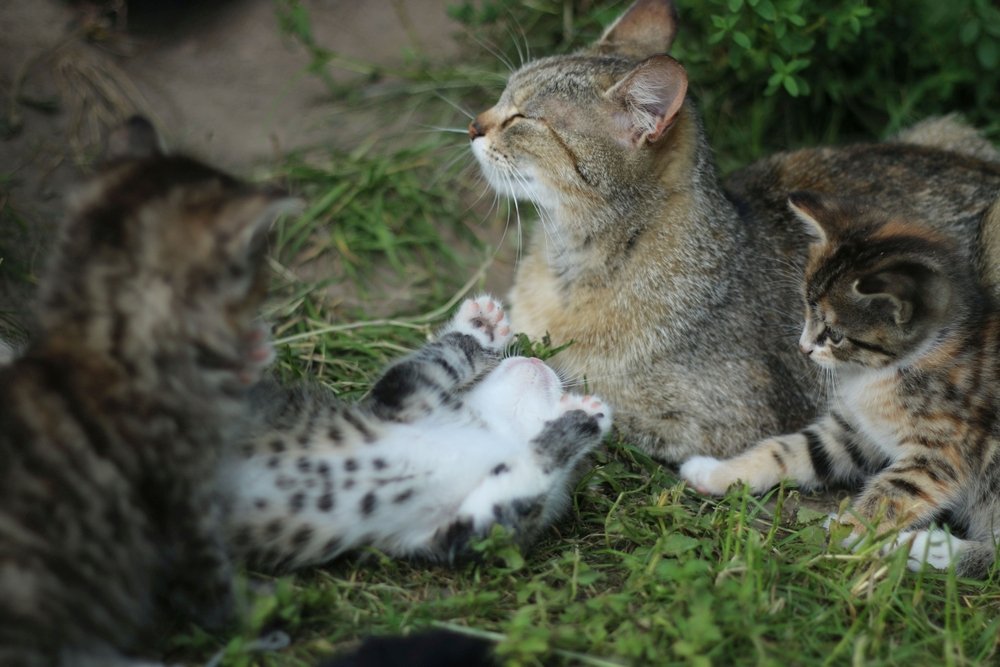
Felidae is skilled predators. Their claws, in contrast to most carnivores, are retractable. This keeps their sharp-edged claws from dulling.
They have powerful canines that aid in the killing of prey. They have exceptional vision, hearing, and a specialized strong nose with an excellent sense of smell.
Felidae is divided into two groups based on a characteristic, the “big cats” which include the lion, leopard, tiger, and jaguar can roar. The other cats in this family cannot roar.
Species of Wildcats
There are the following known Species in the Felidae family
African Golden Cat (Caracal aurata)
It can be found only in Central and Western Africa’s rainforests. It ranges from Senegal through the Central African Republic, Kenya, and southern Angola. It lives in tropical forests from sea level to 3,000m above sea level. It likes dense, damp woodland with dense undergrowth near rivers, but it also lives in bamboo forests, high moorlands, and cloud forests. The IUCN Red List classifies it as Vulnerable.
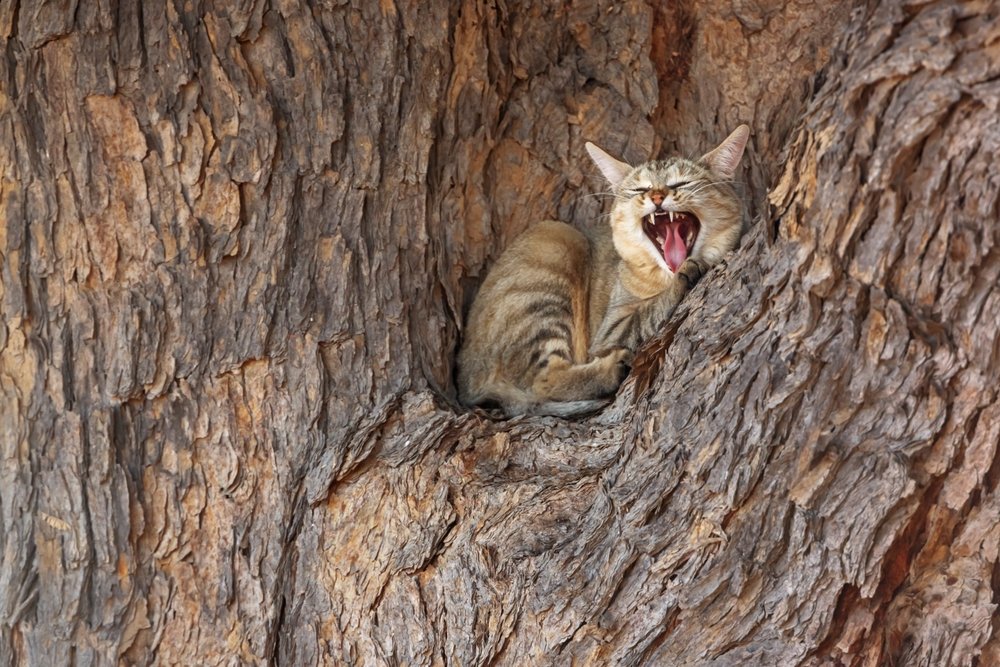
African Lion (Panthera leo)
They can be found in isolated populations throughout Sub-Saharan Africa. The lion enjoys grassy plains and savannahs, riverside brush, and open wooded areas with bushes. It rarely ventures into closed woodlands. The Asiatic lion prefers a mix of arid savannah forest and very dry, deciduous scrub forest as its preferred habitat. The IUCN Red List classifies it as Vulnerable.
Andean Cat (Leopardus jacobita)
It is native to the high Andes Mountains, found at elevations ranging from 1,800 m in the southern Andes to above 4,000 m in Bolivia, central Peru, and Chile. It favors a temperate and terrestrial habitat, as evidenced by the arid, sparse vegetation, rocky, and steep terrain.
Asiatic Golden Cat (Pardofelis temminckii)
It is distributed through Northeastern India, Bhutan, Eastern Nepal, Myanmar, Cambodia, Thailand, Bangladesh, Laos, Vietnam, Sumatra, Malaysia, and southern China. It loves forest settings with rocky outcroppings and lives in tropical rainforests, dry deciduous, and subtropical evergreen forests. The IUCN Red List classifies it as Near Threatened.
Black-footed Cat (Felis nigripes)
It is indigenous to South-Africa. Its range extends northward from South Africa through Namibia, Zimbabwe, Botswana, and southern Angola. It lives in open, dry savannas and scrubland with low bush cover, and short grasses.
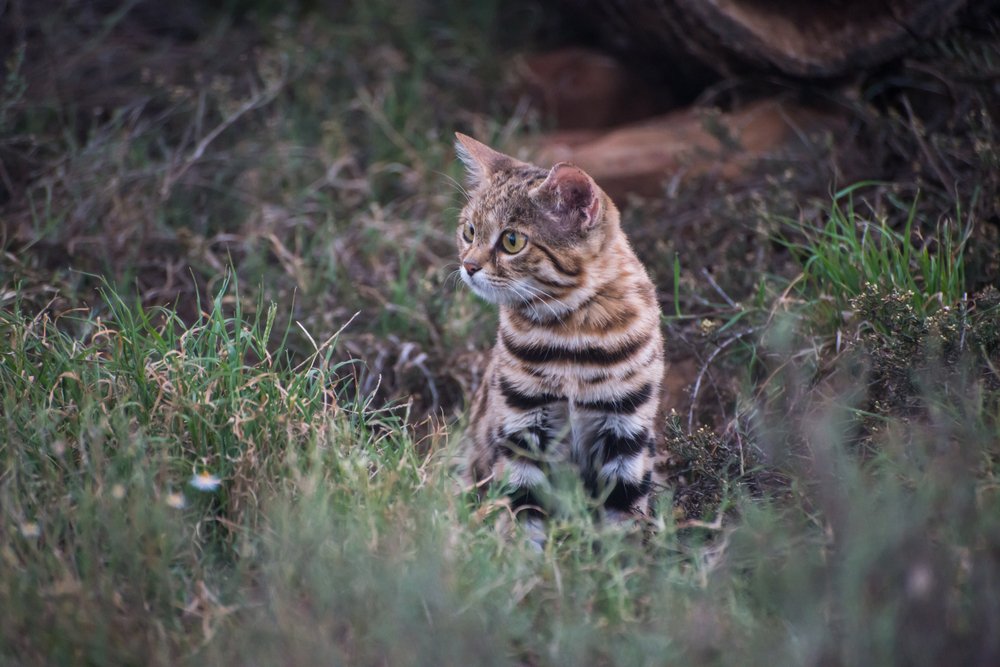
Bobcat (Lynx rufus)
It is distributed from south Canada across the USA to Mexico. It favors deciduous, coniferous, or mixed forests but does not rely solely on the deep forest. It varies from Florida’s steamy marshes to Texas’ desert deserts and rugged mountain peaks.
Borneo Bay Cat (Pardofelis badia)
It is unique to the Borneo island. Prefered habitats are around water sources such as mangroves and rivers. Its population is highly endangered due to weland degradation according to IUCN.
Canada Lynx (Lynx Canadensis)
It lives in Canada, Alaska and northern sides of the United States. It can be found mostly in Canada’s deep boreal forest.
Caracal (Caracal caracal)
Caracal is endemic to the Middle East, Africa, desert parts of Pakistan, Central Asia and northwestern India. It is found throughout Asia from the Arabian Peninsula to the Middle East, , Uzbekistan, West India, and Turkmenistan. It can be found in woods, marshy lowlands, savannas, scrub forests, and semi-deserts, but it prefers arid places with little rainfall and plenty of covers. It can be found up to 3,000 m in alpine settings.
Cheetah (Acinonyx jubatus)
This animal is built for speed. Its speed is ranging from 80 to 128 kilometers per hour. The cheetah is generally found in eastern and southern Africa. They are uncommon in tropical woodlands. Because the cheetahs’ mode of prey is to track and pursue its prey by running, an open environment, such as dispersed bushes, is usually best. According to the IUCN Red List, cheetahs are vulnerable.
Clouded Leopard (Neofelis nebulosa)
It can be found in the Himalayan foothills of Bhutans, Nepal, Myanmar, India, Thailand, southeastern Bangladesh, China, and Peninsular Malaysia. Its popultion is Vulnerable according to IUCN.
Eurasian Lynx (Lynx lynx)
It can be found throughout Europe, Siberia, Central Asia, The Himalayas and Tibetan Plateau. It lives in boreal forests up to 5,500 m in elevation. Despite its widespread distribution, it is endangered due to habitat loss and fragmentation, poaching, and prey depletion.
Fishing Cat (Prionailurus viverrine)
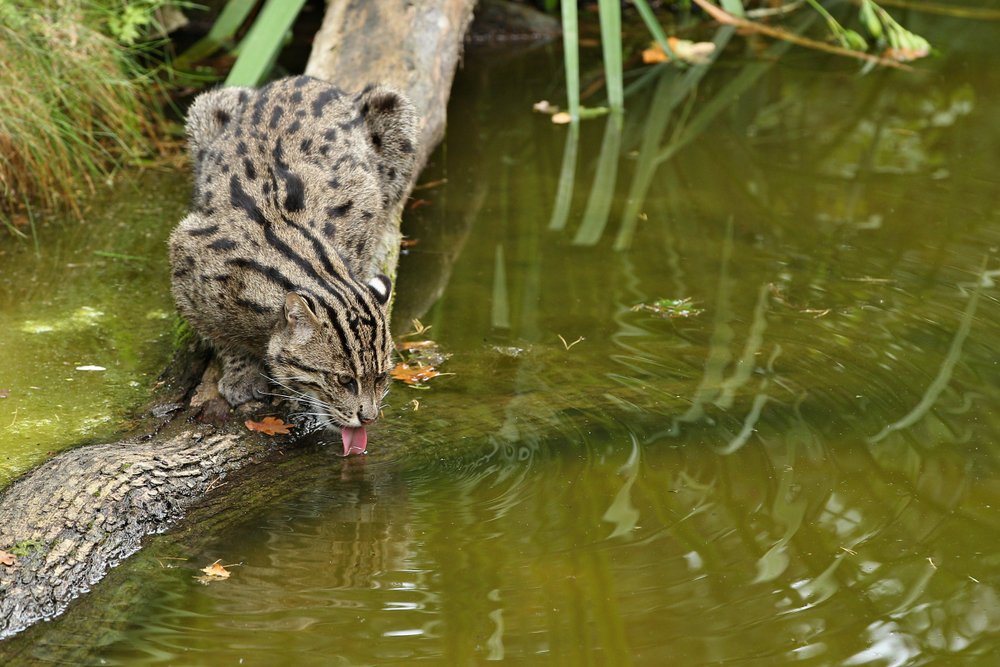
Wetland destruction is threatening fishing cat populations. Its prefers to live near wetlands, such as mangroves, streams, rivers, swamps, and oxbow lakes. The IUCN red list classifies this animal as vulnerable.
Flat-headed Cat (Prionailurus planiceps)
It can be found in Thailand, Malaysia, Sumatra, and Borneo. The majority of the population lives in marshes, which are being destroyed and changed. That’s why it is highly endangered according to IUCN.
Geoffroy’s Cat (Leopardus geoffroyi)
It is native to South America’s southern and central regions. Bolivia, Paraguay, Uruguay, Argentina, and Brazil are all home to Geoffroy’s cat. It also lives at elevations varying from zero elevation to 3,800 meters in the Andes. It loves open woodland or scrubland with lots of covers, but it can also be found in meadows and marshes.
Guigna (Leopardus guigna)
Guigna is found predominantly in Chile, as well as in adjacent parts of Argentina and southern Andean. It favors deciduous temperate moist woods, sclerophyllous scrub, and coniferous forests to evergreen temperate rainforests.
Iberian Lynx (Lynx pardinus)
It can be found only on the Iberian Peninsula in southern Europe. The Iberian lynx loves open grassland intermingled with thick vegetation such as strawberry trees, mastic, and juniper, holm oak and cork oak. It is now mostly limited to mountainous locations. The IUCN Red List classifies it as Endangered.
Jaguar (Panthera onca)
Its current range spans from Mexico to South America, including Nicaragua, Honduras, Guatemala, Costa Rica, and Belize, Venezuela, Guiana, Panama, Brazil, Guyana, Ecuador, Peru, French, Suriname, Paraguay, Bolivia, and Argentina. The jaguar favors dense woodland and normally occupies rainforests, tropical, dry deciduous and subtropical broadleaf moist forests, and cloud forests. It has been observed at heights as high as 3,800 m, but it avoids montane forests. It prefers densely vegetated marshes and riverine environments.
Jaguarundi (Puma yagouaroundi)
The jaguarundi lives in a variety of confined and open habitats, including tropical rainforests, deciduous forests, thorn scrubs, and deserts. It is abundant in Peru, Venezuela, and Brazil. Its IUCN Red List classifies it as Least Concern, but populations are declining.
Jungle Cat (Felis chaus)
It is native to the Caucasus South-China, Middle East, and Southeast Asia. It prefers densely vegetated wetlands such as coastal areas, swamps, and riparian environments.
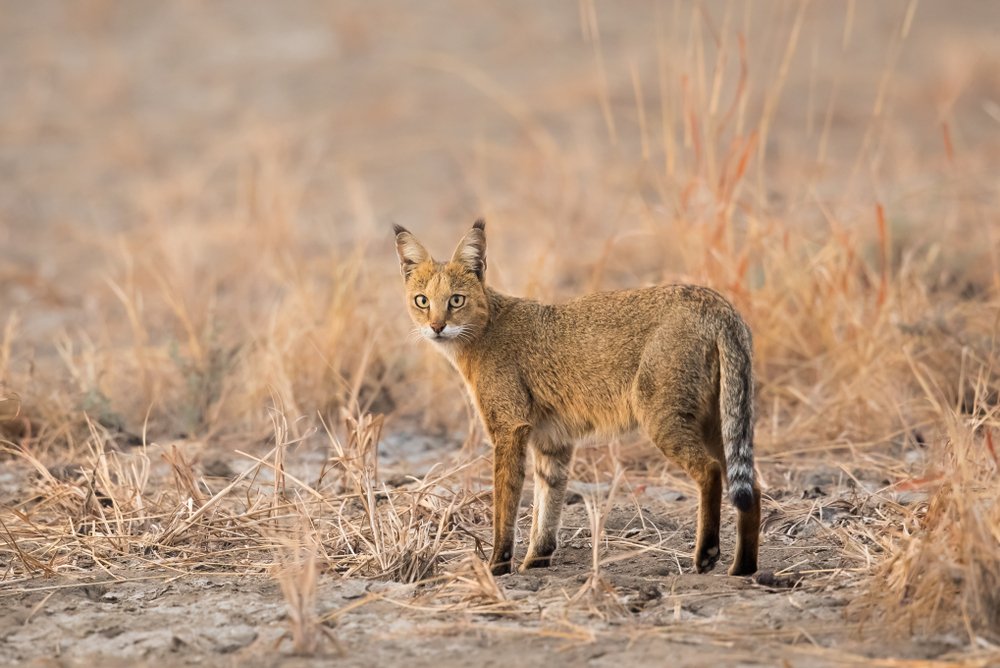
Leopard (Panthera pardus)
It is found throughout Sub-Saharan Africa, Southern Russia, Western and Central Asia, and Southeast Asia. It prefers savanna and rainforest habitats, as well as places where grasslands, riverine, and woodlands forests.
Leopard Cat (Prionailurus bengalensis)
Its range ranges from the Amur area of Russia’s Far East to northern Pakistan, China, the Peninsulain Korea, and the Indian Subcontinent. It can be found in tropical rainforests, dense vegetation at zero elevation, subtropical deciduous and coniferous forests in the Himalayan foothills at elevations above 1,000 meters.
Marbled Cat (Pardofelis marmorata)
It is native to the Southeast Asia and East Himalayas, where it lives in forest areas from zero elevation to 2,500 meters.
Margay (Leopardus wiedii)
It lives primarily in evergreen and deciduous woodland. It ranges from Mexico’s tropical lowlands across Central America to Brazil and Paraguay.
Mountain Lion (Puma concolor)
The cougar is distributed from the Yukon forests in Canada to the southern Andes in America. The cougar can be found in all sorts of forests, lowland and, open places with minimal vegetation, and mountainous deserts up to an elevation of 5,800 meters.
Ocelot (Leopardus pardalis)
It is endemic to the South of United States, Mexico, and South America, as well as Trinidad and Margarita in the Caribbean. It loves regions with dense foliage and good prey availability near water sources. The IUCN listed the ocelot as Least Concern, and it is threatened by habitat destruction, poaching, and road accidents, in red data book.
Oncilla (Leopardus tigrinus)
It has been found in Costa Rica’s cloud forests, the northern Andes at elevations from 1,500 to 3,000 meters, and northern Brazil’s dry Cerrado and Caatinga environments. According to IUCN its population is Vulnerable.
Pallas’s Cat (Otocolobus manul)
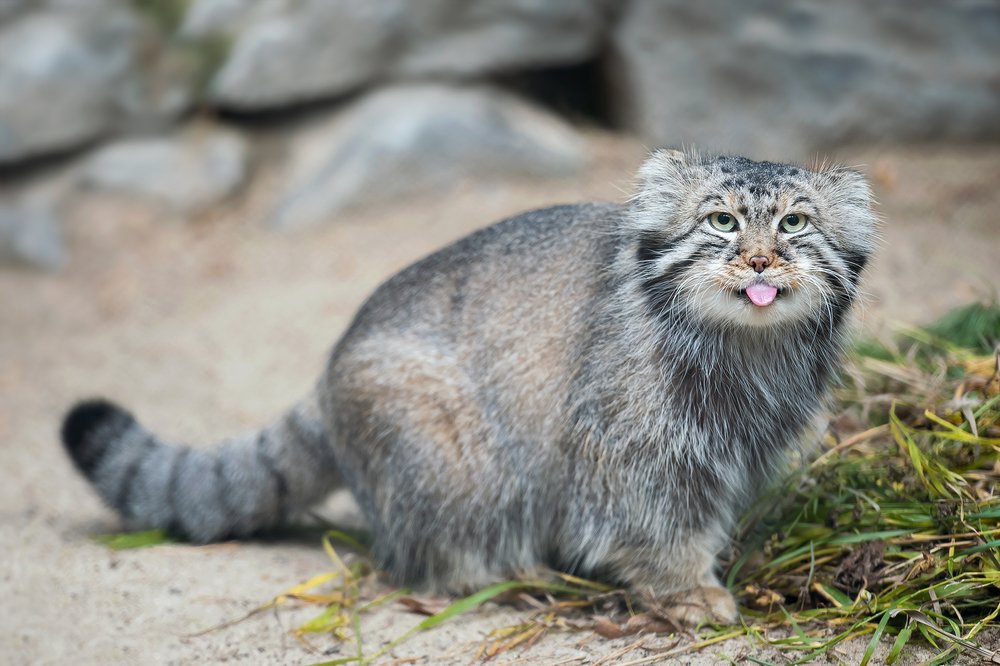
The range of the Pallas’ cat extends eastward from the Caucasus to Mongolia, Central Asia, and nearby regions of Dzungaria and the Tibetan Plateau. It can be found in montane shrublands and grasslands, slopes, ravines, and rocky outcrops where the continuous snow cover is less than 15–20 cm.
Pampas Cat (Leopardus colocolo)
It is a small South American wild cat. The IUCN Red List classifies it as Near Threatened. It is named after the Pampas, however, it can be found at elevations of up to 5,000 meters in shrubland, dry forest, and grassland.
Rusty-spotted Cat (Prionailurus rubiginosus)
It is one of the smallest cat in Felidae. It is mostly found in damp and dry deciduous woods, as well as scrub and grassland, but it is unlikely to be found in evergreen forests. It favors dense foliage and rocky terrain.
Sand Cat (Felis margarita)
They live in dry deserts far from water sources. It has been discovered in Algeria, Chad, Morocco, Egypt, the Arabian Peninsula, Central Asia, Niger, and the Middle East.
Serval (Leptailurus serval)
It is uncommon in North Africa and the Sahel, but common in Sub-Saharan Africa, except for rainforest regions.
Snow Leopard (Panthera uncia)
It is native to the mountain ranges of Central and South Asia. It is classified as Vulnerable on the IUCN Red List. It can be found at elevations ranging from 3,000 to 4,500 metres in alpine and subalpine zones spanning the Himalayas, Eastern Afghanistan, and the Tibetan Plateau to southern Siberia, western China, and Mongolia.
Sunda Clouded Leopard (Neofelis diardi)
It can be found on the Indonesian islands of Borneo and Sumatra. Its main habitat is The lowland rainforest. It has been classified as Vulnerable by IUCN.
Tiger (Panthera tigris)
It lives in Korean pine forests, temperate broadleaf, and riparian forests. It prefers moist broadleaf woods, moist evergreen forests, tropical dry forests, and the Sundarbans swamp forests of the Indian subcontinent.
Wild Cat (Felis silvestris)
The wildcat is a species complex that includes two tiny wild cat species: the European wildcat and the African wildcat. The European wildcat lives in forests throughout Europe, Anatolia, and the Caucasus, whereas the African wildcat lives in semi-arid environments and steppes throughout Africa, Central Asia, the Arabian Peninsula, West China, and western India.
IUCN Red List has classified the wildcat as Least Concern. It can be found from zero elevation to 2,250 meters in the Pyrenees on the Iberian peninsula. Except for rainforests, the African wildcat can be found throughout Africa’s savannahs from Mauritania on the Atlantic coast eastwards.
Read Also: How Many Black Panthers Are Left in the World?
References
https://www.iucnredlist.org/species/18306/50663128
https://www.jstor.org/stable/2259679
https://www.iucnredlist.org/species/15951/115130419


